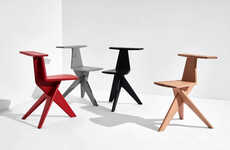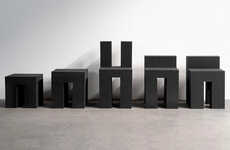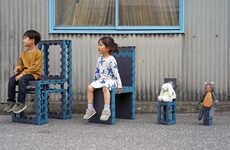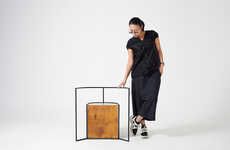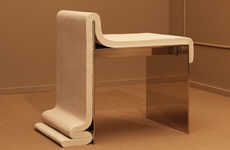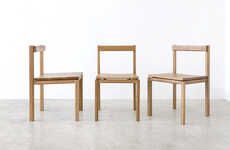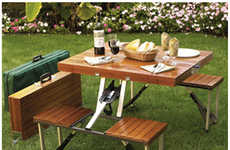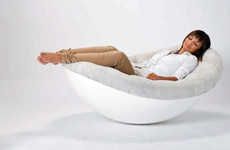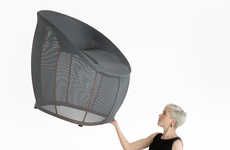
The M3 Chair's Open Framework Defines the Space it Occupies
Amelia Roblin — October 9, 2011 — Art & Design
References: thomasfeichtner & mocoloco
It is not unusual for a single seater sofa to take up as much room as the M3 Chair does, but its open composition juxtaposed against its rawboned structure strikes an intriguing visual conflict between solid and void.
It would certainly have been possible to support a seat of a comparable size using less oak material while occupying less space. On the other hand, however, many furnishings might appear more substantial than this, all the while incorporating hidden space as one of their largest compositional constituents.
Three cubic meters of empty space defined by rigid rounded dowels mark the two sole components of the M3 Chair. Material honesty with a playful execution are really what's behind this quirky cantilevered Thomas Feichtner seating system, which is "also the symbiosis between traditional workmanship and contemporary design."
It would certainly have been possible to support a seat of a comparable size using less oak material while occupying less space. On the other hand, however, many furnishings might appear more substantial than this, all the while incorporating hidden space as one of their largest compositional constituents.
Three cubic meters of empty space defined by rigid rounded dowels mark the two sole components of the M3 Chair. Material honesty with a playful execution are really what's behind this quirky cantilevered Thomas Feichtner seating system, which is "also the symbiosis between traditional workmanship and contemporary design."
Trend Themes
1. Cubic Cantilevered Seating - Designing seating systems with open compositions and material honesty.
2. Intriguing Visual Conflict - Creating furniture that juxtaposes solid and void to create a visually captivating experience.
3. Playful Execution - Incorporating elements of playfulness and whimsy in the design of furniture.
Industry Implications
1. Furniture Manufacturing - Opportunity to innovate in the design and production of innovative seating systems.
2. Interior Design - Exploring new concepts that create visual conflicts and unique spatial experiences.
3. Contemporary Design - Combining traditional craftsmanship with contemporary design principles in furniture creation.
4.2
Score
Popularity
Activity
Freshness


